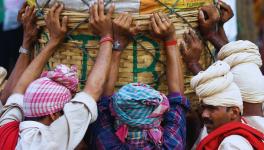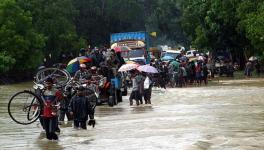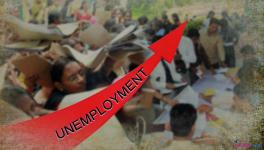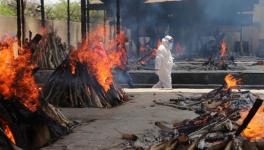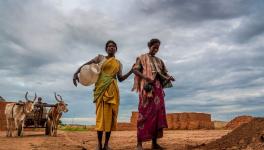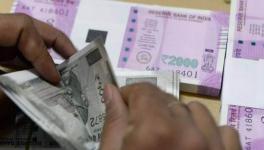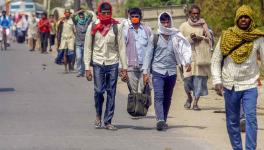Enough Beds and Oxygen Would Have Saved More People: Top Scientist
Representational use only.Image Courtesy: Livemint
Leading scientist Dr Rakesh Mishra retired two weeks ago as director of the Centre of Cellular and Molecular Biology, which is involved in Covid-19 research. He is also a member of the Indian SARS-CoV2 Genome Sequencing Consortia (INSACOG). He was on an expert panel that had warned the government about the emergence of new variants in early March. In an interview with Rashme Sehgal, Dr Mishra explains why the new variants are not responsible for the far higher fatalities that India is witness to during the brutal second wave of this pandemic. Rather, the lack of timely and adequate medical care—oxygen and beds—is contributing to the high death toll. This has happened because the extent of the second wave took everybody by surprise in the scientific community and the government. He also touches upon some recent controversies that have dogged India’s fight against the virus, such as the resignation of a leading virologist from a government-appointed committee and the evident failure of the government to heed early scientific warnings. Edited excerpts.
As a scientist, what is your reaction to the resignation of leading virologist Dr Shahid Jameel as chair of the INSACOG, the Scientific Advisory Group of a consortium of labs investigating the variants of the Novel Coronavirus? In an article for the New York Times, Dr Jameel had implied that measures suggested by scientists faced stubborn resistance from policymakers.
My expertise is in science and genomics.
We will come to those, but Dr Jameel had emphasised that decision-making based on scientific evidence was at a discount. How far is this observation correct? Dr Jameel is hardly the kind of scientist who makes sweeping statements...
You are right. I have a lot of respect for Shahid [Jameel]. We interact a lot and he is a good friend. I don’t think it is appropriate for me to comment on what Jameel has said, though his comments are not without significance.
I am asking this in the context that several scientists had warned the government about mutants of the virus in the country in late February and early March. Was their advice disregarded?
It has become a massive problem and is affecting all our lives.
Scientists did warn about the presence of new variants and you have been quoted stating that scientists were sending daily reports to the National Centre of Disease Control, which in turn were being forwarded to the higher authorities but did not receive the attention they should have.
In retrospect, I can say there are many ways of looking at this issue. At that time, no one knew how big this wave would be. Last year, around this time, people were talking about bringing in a vaccine, but only six months ago I had said there no vaccine could be produced in such a short time. I have been proved wrong.
We are going through very hard times. I would be happy to talk about my area of expertise and I would like to refrain from commenting on individuals. Nor am I have the best authority to comment on the situation as a whole. Covid-19 is a very unusual situation and everything dealing with it is very sensitive. The system has been stretched to its limit. My view is that at the present we must do all we can to help the system. We are facing tremendous problems and all of us must put our heads together and see how best we can tackle the situation.
In the genome sequencing scientists are doing, what is it they have found that makes some variants more significant than others?
The list of variants is a very large number. We have analysed around 6,000 genome-sequencings, deposited with us from India. We discovered around 7,400 variants which clearly means that most variants are of little consequence. They come and go and have only academic relevance. But there are also variants of interest, where a mutation has taken place. It may have been in the spike protein of the virus; it may be in a biologically important part of the virus which will evade the immune response or be more tightly binding to the receptor [cells] so it can enter more easily.
The next category is a variant of concern, which is [a variant that is] becoming more dominant than others and is increasing its footprint even if we do not know anything about its biology. The very fact that it is increasing its footprint is a matter of concern. Even if it does not have more symptoms, it will increase its infectivity. Right now, we have two major variants of concern in India, the B117 also called the UK variant and the B1.617. Both these variants, luckily, are not insensitive to the vaccine which means the vaccine can neutralise them.
These variants are not causing more symptoms or mortality, they are similar to previous variants but what has been established is that they are more infectious— which means an increased number of cases—and that has led to overcrowding in our hospitals.
Yes, but being more infectious has thrown up the limitations of our medical infrastructure and this, in turn, has resulted in a much higher death rate?
The higher rate of mortality is not because of these variants. These variants are not causing higher mortality. If an individual gets infected by these variants and does not find a bed in a hospital or is not given oxygen on time then that mortality is avoidable. If we had beds or if we had oxygen, we could have saved him [individuals infected by variants]. Let me stress again that this [excess] mortality could have been avoided. These variants move so fast that it places tremendous stress on the system. But biologically, the symptoms are similar to earlier variants. This means they are manageable. If we don’t allow the virus to spread by not allowing crowding, it means we can manage it. If we have a strict lockdown, it may cause economic problems but it will help control the virus.
The symptoms may be similar to the earlier variants but when scientists warned the government that these variants were more infectious, the advice should have been followed through…
I am willing to answer only technical questions.
You have ten labs that are part of the INSACOG, but the number of genome sequencing taking place is quite low given that the overall number of Covid-19 cases in India is very high.
The target of the INACOG was to do [genome-sequencing for] 5% of new cases but this target was set several months ago when the number of cases was much smaller. Today, 5% of all cases cannot be done [as the overall number of positive infections is very high]. If the positivity rate comes down, then maybe we can go back to that number. Right now, the focus is, if there is a super-spreader event somewhere, if there are break-through infections, then we will look at their specific features. And we also collect scientifically randomised samples from various geographical locations which offer a tremendous challenge to us. Particularly when healthcare workers have been working round the clock for several months now. Collecting and sending samples as part of the cold chain has several hitches which need to be sorted out all the time.
We have to make sure all the time that we do not miss on any part of the country from where a new variant can emerge. That is a challenge we are working on. We have crossed 20,000 genome sequencing—much of it is submitted. We are increasing the number of labs in more geographical locations so that transportation becomes easier given that these new variants are increasing their footprint in South India and Bengal. The key issue before us is to have a scientifically randomised collection of samples so we do not miss out on any new variants emerging.
What exactly is the focus of your institute at present?
We are doing three different things—we are a validation centre, a national repository and a testing centre. We have validated many kits by providing improved methods of testing, making the whole process less expensive and faster. We have developed many kits and improved the RTPCR method of testing by introducing dry swab testing which is a less expensive, quicker and safer method that has been approved by the Indian Council for Medical Research [ICMR]. This will have an impact. The kits are available as of this week.
How much faster will this be?
You can have a turnaround time of three to four hours. It is also much cheaper. The other thing we do is to culture the virus. [If and when] any new variant comes, we culture it in the lab and test it for its various properties, and then share the virus with companies. One of the antidotes we have prepared against this virus is going for human trials this week with the help of a company in Hyderabad named Wings. It should be available in a few weeks as there is no antidote to the virus as of yet.
We also culture the virus to see if it is effective against vaccines or not and we have tested the UK variant and B1.617. The Defence Minister has released a new drug made by the Defence Research and Development Organisation [DRDO]. We tested it for its anti-Covid-19 properties. We have several drugs at different levels of development with different companies.
How effective is the drug made by the DRDO?
The biology and genome culture are ours [CCMB’s]. It looks like it can reduce hospital and oxygen dependence by three days. It’s like Remdesivir. But since this is only the trial stage when the drug comes into use, more data will be collected then we can talk more accurately.
We also do surveillance at airports. All samples from airports come to us. You will be happy to know that the UK variant could not enter Hyderabad, Telangana of Andhra Pradesh because we never allowed this to happen. We kept travellers infected in quarantine but this did not happen in Punjab and Delhi.
If all testing was coming to you, why couldn’t you stop it throughout the country?
We only did it for Hyderabad. We cannot do [it] for the whole country. We are also doing sewage surveillance by collecting samples that tell us what percentage of people are infected. Right now, we are doing [this] for eight to ten cities. We have been following this for some time now and we find [that] it matches with the actual diagnostic numbers. This should be made a regular surveillance feature.
There is a question mark on the Bengal variant…
The Bengal variant, B1.618, has disappeared and been completely replaced by the B1.617 variant. It [B1.618] was there for several months but B1.617 is more infectious. The same is the case with the E480K variant. Both these have been replaced by the more infectious varieties.
Get the latest reports & analysis with people's perspective on Protests, movements & deep analytical videos, discussions of the current affairs in your Telegram app. Subscribe to NewsClick's Telegram channel & get Real-Time updates on stories, as they get published on our website.









